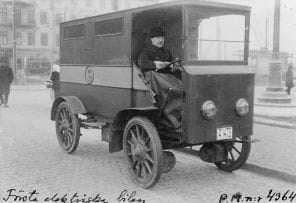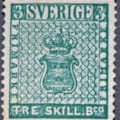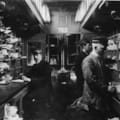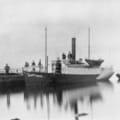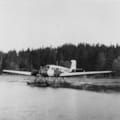Automobiles
The New York Times reported in the summer of 1904 on a commission dispatched by the Danish government in Europe to investigate the usefulness of the automobile for short postal transports.
The commission found that the best way to achieve the goal of rapid delivery was with the help of automobiles. The commission also stipulated specific, stringent requirements for any cars to be purchased and tested in postal service. The newspaper expressed its hope that these would be American cars. The outcome of the commission’s journey is lost to history – what is known is that post was delivered by car in Copenhagen in 1908.
First test in Stockholm 1903
The Post Office in Stockholm first tested an automobile – a 6 horsepower car manufactured in Eskilstuna that travelled 15 km/h – in 1903. This experiment had no real successors. In 1905, local Swedish entrepreneurs started delivering mail by car on a trial basis. The postmaster was enthusiastic about the great amount of time that was saved, but his joy was short-lived. Weather, wind and the bad roads of the day presented obstacles for the advance of the automobile. It wasn’t made easier by a 1907 law stipulating that cars may not travel faster than 25 km/h during daylight hours and 10 km/h in the dark – rendering automobiles little faster than horse-drawn vehicles.
And in Gothenburg 1911
Automobiles (a truck and a delivery van) were first purchased for use by the Swedish Post Office in Gothenburg in 1911. Various types of automobiles were tested: in 1910, a number of electric automobiles were used in Copenhagen to deliver mail. Electric cars were also tested in Stockholm but were considered too heavy due to their batteries and did not have a large enough range.
Despite its somewhat slow start, the car as we know it took over an increasing amount of postal traffic. In 1921 the Swedish Post Office reported that cars were used on 96 routes; by 1925 this number had risen to 540.
Today’s mail-vans are energy-efficient, and drivers are trained in fuel-efficient, safe driving techniques.
